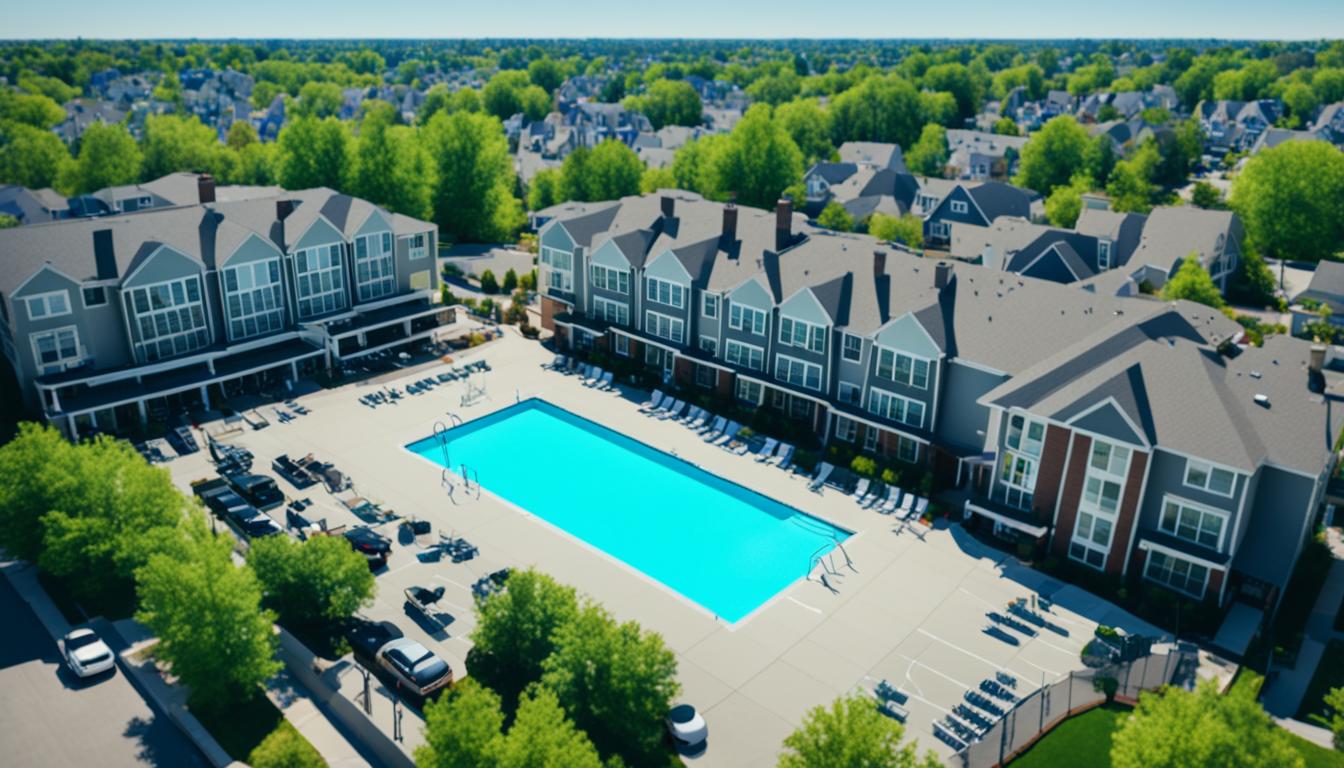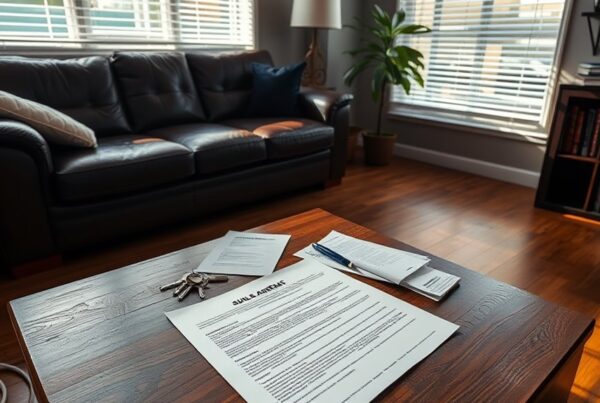In the real estate market, you can find value-added properties. These properties need strategic improvements and management to be fully valuable. They are often underpriced because of neglect but have a lot of potential. This potential can be unlocked through enhancements, from small upgrades to big renovations. Making these places operate more efficiently can save a lot of money. This can also increase the money they earn through rent. This is why we focus on Adjusting Rental Rates for Long Term Rentals.
Where a property is located is very important. Properties in areas that are growing are especially valuable. Being close to transportation, places to eat, and new popular spots makes a property more attractive. Buying these properties is a bigger risk but can lead to big rewards. Having a good plan, with careful renovation and understanding the market, is vital for success. You can get money to invest from private equity or Real Estate Investment Trusts (REITs). But, it’s important to know the risks. These include the condition of the market, the challenges of renovations, the laws, and possible financial issues.
Key Takeaways
- Value-added properties necessitate strategic improvements and management enhancements to achieve their full value potential.
- They often require substantial physical and operational upgrades, from aesthetic renovations to significant cost-saving efficiencies.
- Location is key, with properties in growth-centric areas being especially valuable post-improvement.
- While higher risk, these investments can offer substantial returns with the right strategy.
- Success hinges on a combination of renovation, operational efficiency, market analysis, and strategic planning.
The Importance of Adjusting Rental Rates for Long Term Rentals
Changing rental rates is key for investors to make the most from their properties. It helps keep buildings appealing in a tough market. This also meets what tenants can afford. Good strategies for adjusting rent help properties stay in demand and avoid empty periods.
Adjusting prices based on the state of the property, what it offers, and what the market wants is important. Rates should align with the area’s rental trends. This keeps the pricing fair and helps keep tenants happy.
Creating a clear method for changing rent is crucial. Here’s what you should do:
- Periodic Review: Always check out what’s happening in the market and what tenants want.
- Market Analysis: Do thorough research to get a grip on local rent changes.
- Tenant Feedback: Listen to what tenants say to understand how they feel about price increases.
Using these steps all together helps make sure your properties are priced just right. This leads to more people wanting to live there and more money in your pocket. With these strategies, your property stands out in the market and meets what tenants can afford.
Value-Added Amenities and Their Impact on Rental Pricing
Adding special amenities can make a big difference in how much you can charge for rent. They make the property more attractive and useful. We will talk about figuring out how much these amenities are worth and how they make the property more appealing.
Determining Amenity Valuation
Special features can raise a property’s rent value a lot. Things like washers, fast internet, and energy-saving systems are not just good for the planet. They also mean less stress and more savings for tenants. To figure out an amenity’s value, we look at what tenants like, how it saves them money, and the good it does for rent and income.
Enhancing Property Appeal
Having modern amenities and well-kept spaces can draw renters in. Adding new inside or using smart care methods can make people more interested. This can make more people want to stay and rent from you. Especially if the amenities match what renters are looking for right now.
Rental Rate Adjustment for Long-Term Rentals
It’s essential to use good rent adjustment strategies for long-term rentals. This helps keep your rental’s rental value high. By watching the local market demand closely, you can set competitive prices.
As a property owner, you must factor in ongoing costs like mortgage and insurance. You may need to adjust rents to cover these while keeping them fair. Watching market demand helps you know when to raise your prices. In high-demand times, you can often ask for more. But when demand is low, offering competitive prices can get you more renters.
Adding special amenities can make your property more appealing and worth more. Tenants often look at amenities first when choosing a place. So, including the right ones improves their living and justifies any rent increases.
Keeping an eye on the market is key to setting the right rents, meeting what tenants want and the current market.
| Key Factors | Impact on Rental Rates |
|---|---|
| Market Demand | High demand lets you charge more; low demand means you may have to lower your prices. |
| Property Costs | You need to adjust your rents to cover things like mortgages and maintenance costs. |
| Amenities | Good amenities can make it possible to ask for higher rents. |
Keeping your rates up to date by researching the market and adding value through amenities is key. The rental market is always changing. So, staying flexible and well-informed is crucial to making smart rental rate decisions.
Location-Based Pricing Strategies
Good pricing strategies depend a lot on where the property is. This helps landlords earn more money while finding tenants easily. It’s important to know how the area’s features affect the rent. This way, you can set prices that are just right.
Understanding Neighborhood Pricing
To know about neighborhood prices, look at what makes an area great. Things like how many empty homes there are (vacancy rates), what people want, how close it is to buses or trains, what’s around like shops, and jobs are very important.
Places that are really popular have higher rents because of their great features. When you’re thinking about the rent, compare what each area has to offer. This helps you make renting a home a good deal and a place where people really want to live.
Utilizing Market Demand
How much people want to live in a place also affects the rent. If many want to live there but there are not many houses to rent, landlords can ask for more money. But, it’s vital to keep in mind what renters can afford.
If you make use of the area’s perks and give good deals, you can stay ahead. By keeping an eye on the market, you can adjust your prices. This way, you can keep places rented out and make sure you’re earning well.
Effective Rent Adjustment Strategies
It’s key for property owners to adjust rents in a smart way. They need strategies that keep profits up and tenants happy. The right approach increases rent little by little without stressing out tenants.
Incremental Adjustments
Incremental adjustments are a top strategy for raising rents. Landlords can boost rent slowly over time. This keeps rates in line with the market and sticks to the law. It also helps make the change easier for tenants.
Communicating Changes to Tenants
How landlords tell tenants about rent changes matters a lot. Being honest and giving clear notice is crucial. They should explain why the rent is going up.
This could be because of improvements, higher maintenance costs, or taxes. Offering something in return can make the change go over better. This keeps the relationship good and cuts down on arguments.
Maximizing Rental Income Through Property Upgrades
Upgrading your property is a smart move to raise your rent earnings. By making things modern and more energy efficient, your place will stand out. This means you can ask for higher rent prices.
Adding cool stuff like laundry machines or fast internet makes your place more desirable. It attracts better tenants and lets you charge more. And don’t forget to keep everything well-maintained to keep your property value up.
| Upgrade Type | Potential Rental Income Increase | Example Improvements |
|---|---|---|
| Aesthetic Upgrades | 10%-15% | Modern lighting, updated flooring |
| Energy Efficiency | 8%-12% | Solar panels, energy-efficient windows |
| Amenities Addition | 15%-20% | In-unit laundry, smart home systems |
| Regular Maintenance | 5%-10% | Paint, landscaping, plumbing updates |
Picking the right upgrades can increase what you charge in rent. This not only makes tenants happier but also boosts your rental business. Your places will become more popular in the market.
Conclusion
The draw between amenities and location is key for a successful rental. It’s vital to use a smart approach. This includes setting rental rates right and knowing the market well. With a detailed look at market trends and keeping your property top condition, you make sure your investment stands out. Your hard work can keep rental money flowing in.
Adjusting rental rates wisely is a must. This ensures your place stays desirable and meets market needs. Changing rates to show off your property’s upgrades or great spots can boost your earnings. But, remember, you need to keep checking and be ready to move. This way, you keep your spot in the rental spotlight.
But real success in renting pulls from offering top-notch service and smart pricing. It’s all about growing your assets and making your place better all the time. As you fine-tune your strategies, always keep your property in top shape and your eye on market changes. These actions will keep you ahead in the rental game.




